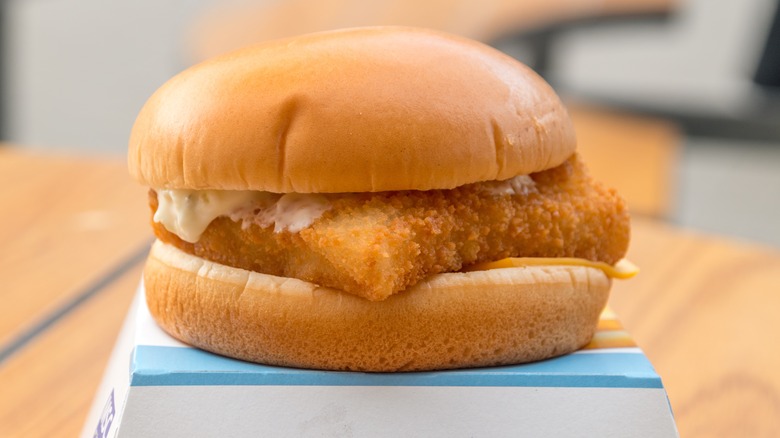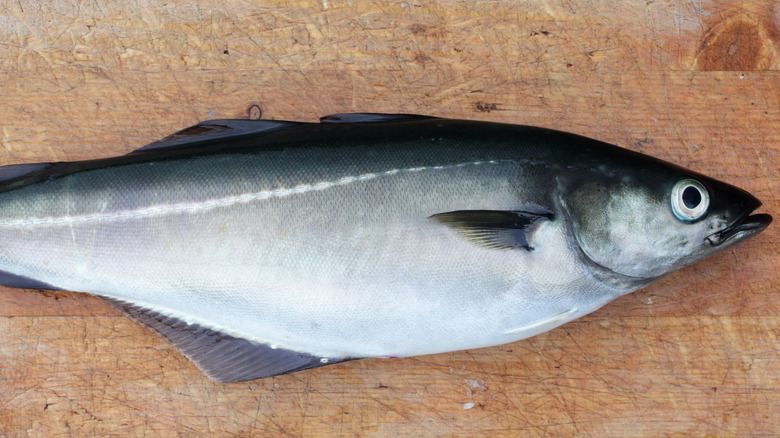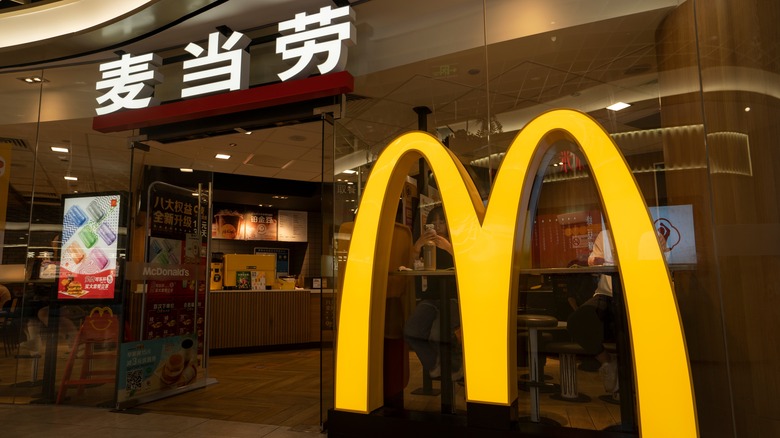What Type Of Fish Does McDonald's Use In Its Filet-O-Fish Sandwich?
Originally invented to appeal to Catholics on meatless Fridays, McDonald's Filet-O-Fish has become a cult favorite, but have you ever wondered what exactly the sandwich's titular fish is? According to McDonad's official website, all Filet-O-Fish is made with Alaskan pollock. Not just any Alaskan pollock but wild-caught Alaskan pollock sourced from sustainable fisheries.
However, the Filet-O-Fish wasn't always made from pollock. When the item was originally introduced in 1962, it used halibut. Later on, the sandwich switched to New Zealand hoki fish, also used by other chains like Long John's Silvers, but due to overfishing and a declining population, McDonald's altered the recipe.
A lot of things have changed at McDonald's in 2024, including a move towards sustainable business practices. This includes reducing virgin fossil fuel-based plastic in Happy Meal toys by 47.8%, setting beef sustainability goals, and only using Marine Stewardship Council-certified sustainable fish. While finding sustainable fish can be sometimes tricky, it is made slightly easier when large chains such as McDonald's source their product from eco-certified suppliers.
Alaskan pollock is sustainable and mild
The reason why McDonald's uses Alaskan pollock comes down to two main reasons: supply and sustainability. McDonald's needs a lot of fish to supply its over 14,000 locations in the U.S., and Alaskan pollock is a naturally fast-growing population, with carefully managed numbers. It's also mild in flavor, which means it can be paired with different ingredients and has a broad appeal.
New Zealand hoki used to be an ingredient in Filet-O-Fish before the New Zealand government cut the allowable catch quota in the 2000s in response to a dwindling population. Most of the fish that McDonald's buys fish from fisheries have been independently certified by the Marine Stewardship Council. These sustainability concerns reduce the number of places that McDonald's can source their seafood from.
These are the same reasons that most fast food places in the U.S. use Alaskan pollock. If you're looking for a non-pollock option, you probably have to make your own fried fish sandwich.
But that doesn't mean that the Filet-O-Fish will always use Alaskan pollock. In 2022, McDonald's Director of Sourcing Jason Cervone told the annual meeting of Genuine Alaska Pollock Producers that the brand was seeing more issues with the fish (per IntraFish). In the past, the restaurant chain has shown it is willing to change the recipe of the Filet-O-Fish to respond to supply issues.
Filet-O-Fish around the world
Unsurprisingly, McDonald's around the world source their fish from different places depending on local prices, taste, availability, and sustainability priorities. Given Canada's proximity to the U.S., they use the same wild-caught Alaskan pollock in their Filet-O-Fish, as does Singapore. In Australia, the sandwich is made from pollock and hoki while in New Zealand it is primarily hoki.
It's not just where the fish is sourced that changes from country to country. McDonald's in Canada, Singapore, and Austria have the Double Filet-O-Fish with an extra portion. In Europe, some countries have eschewed the Filet-O-Fish for the McFish, which replaces the tartare sauce and cheese for ketchup. You can find the double-decker deep-sea cod burger on the menu in Chinese McDonald's, and the fish filet burger in Indonesian McDonald's uses sustainably farmed Tilapia. In addition to the traditional Filet-O-Fish, McDonald's in Singapore also offers the Black Pepper Cheese Filet-O- Fish with black pepper cheese sauce and lettuce.



